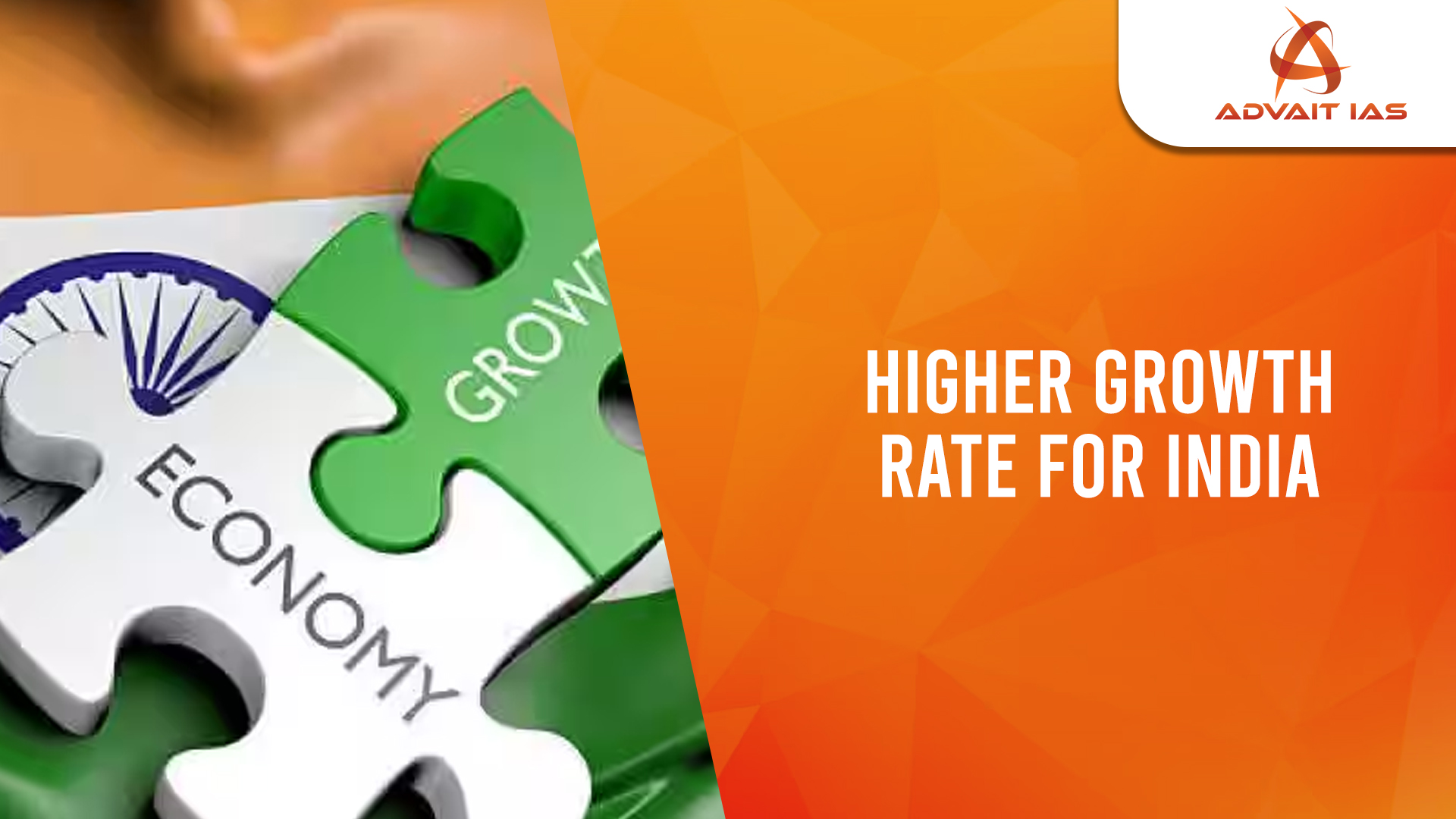India’s GDP growth has averaged around 6% between 2000–2025, often referred to as the “6% GDP growth trap”.
- A brief acceleration to 8% growth (2006–2010) was not sustained.
- Breaking out of this trap demands structural reforms, tech investment, human capital development, and sustainable practices.
Current State of the Indian Economy
- GDP Growth:
- IMF projects 2% growth in 2025 and 6.3% in 2026 – highest among major economies.
- Foreign Investment & Forex Reserves:
- Forex reserves at USD 688.13 billion (May 2025), close to an all-time high.
- Infrastructure Expansion:
- Operational airports increased from 74 (2014) to 159 (2025).
- 50 more airport projects planned by 2030.
- Manufacturing Activity:
- Capacity utilization at 3% in 2025 – reflects strong industrial demand and potential for private investment.
- Employment Trends:
- Unemployment rate declined to 9% in 2024 (rural: 4.2%, urban: 6.7%) – improvement, especially in rural areas.
Key Challenges Hindering Higher GDP Growth
- Declining Investment & Job Creation:
- Investment-to-GDP ratio fell from 42% (2010) to 33% (2023).
- Private investment declined from 18% to 9.8%.
- Employment elasticity dropped from 0.44 (2000s) to 21 (2023) due to capital-intensive sectors.
- Fiscal Constraints:
- 25% of government revenue goes into interest payments, limiting growth expenditure.
- Low tax-to-GDP ratio at 7% vs. >24% in developed economies.
- Public spending hampered by misallocation and bureaucratic inefficiencies.
- High Logistics Costs & Trade Barriers:
- Logistics cost: 14–18% of GDP global average of ~8%.
- Export-to-GDP ratio is low at 5%, restricted by high tariffs, slow trade pacts.
- Social & Institutional Weaknesses:
- Urban-biased growth; rural/agriculture lag behind.
- Top 10% hold 77% of wealth; bottom 50% have 13% of income.
- India ranks 96th on Corruption Perception Index (2024).
- Global Vulnerabilities:
- Geopolitical tensions, major economy slowdowns, and oil price volatility impact growth.
- Heavy reliance on foreign capital inflows makes India susceptible to external shocks.
Key Drivers of Growth in Indian Economy
- Strong Domestic Demand:
- Private consumption grew 9% (Q3 FY25).
- Rural FMCG (Fast-Moving Consumer Goods) sales up by 4% (Apr–Jun 2024).
- Infrastructure & Capital Expenditure:
- Massive investment under NIP, Gati Shakti, Bharatmala.
- Capex allocation of ₹11.21 lakh crore in FY25–26; 8% CAGR growth since FY20.
- Digital Economy & Fintech:
- Digital economy = 74% of GDP (2022–23).
- UPI transactions hit ₹23.48 lakh crore in Jan 2025.
- Manufacturing & Supply Chains:
- Boost from PLI schemes in electronics, EVs, semiconductors.
- Electronics exports reached USD 23.6 billion (FY23).
- India benefitting from China+1 strategy.
- Services Sector:
- IT and fintech-led services exports grew 8% (FY25), up from 5.7% (FY24).
- Energy Transition:
- Renewable energy capacity at 18 GW (Oct 2024), ~46.3% of total.
- Target: USD 8 billion green hydrogen market by 2030.
- Macroeconomic Stability:
- Fiscal deficit projected at 9% of GDP (FY25).
- Retail inflation stable at 9%, despite food inflation at 8.4%.
Steps Needed to Achieve Higher GDP Growth
- Revive Private Investment & Labour-Intensive Sectors:
- Focus on job-rich industries: textiles, food processing, leather, footwear.
- Incentivize through zero import duties, removal of non-tariff barriers, and ease of doing business.
- Promote sector-specific FDI (e.g., Swiss in food, German in leather).
- Fiscal Reforms:
- Raise tax-to-GDP ratio to 15% by simplifying rates and broadening the base.
- Strategic disinvestment to reduce debt burden and reallocate funds to productive sectors.
- Expand Trade & Export Base:
- Finalize FTAs with EU, US, UK.
- Remove non-tariff barriers like QCOs and align with global standards.
- Encourage export-oriented FDI in manufacturing.
- Target export-to-GDP ratio of 25%.






